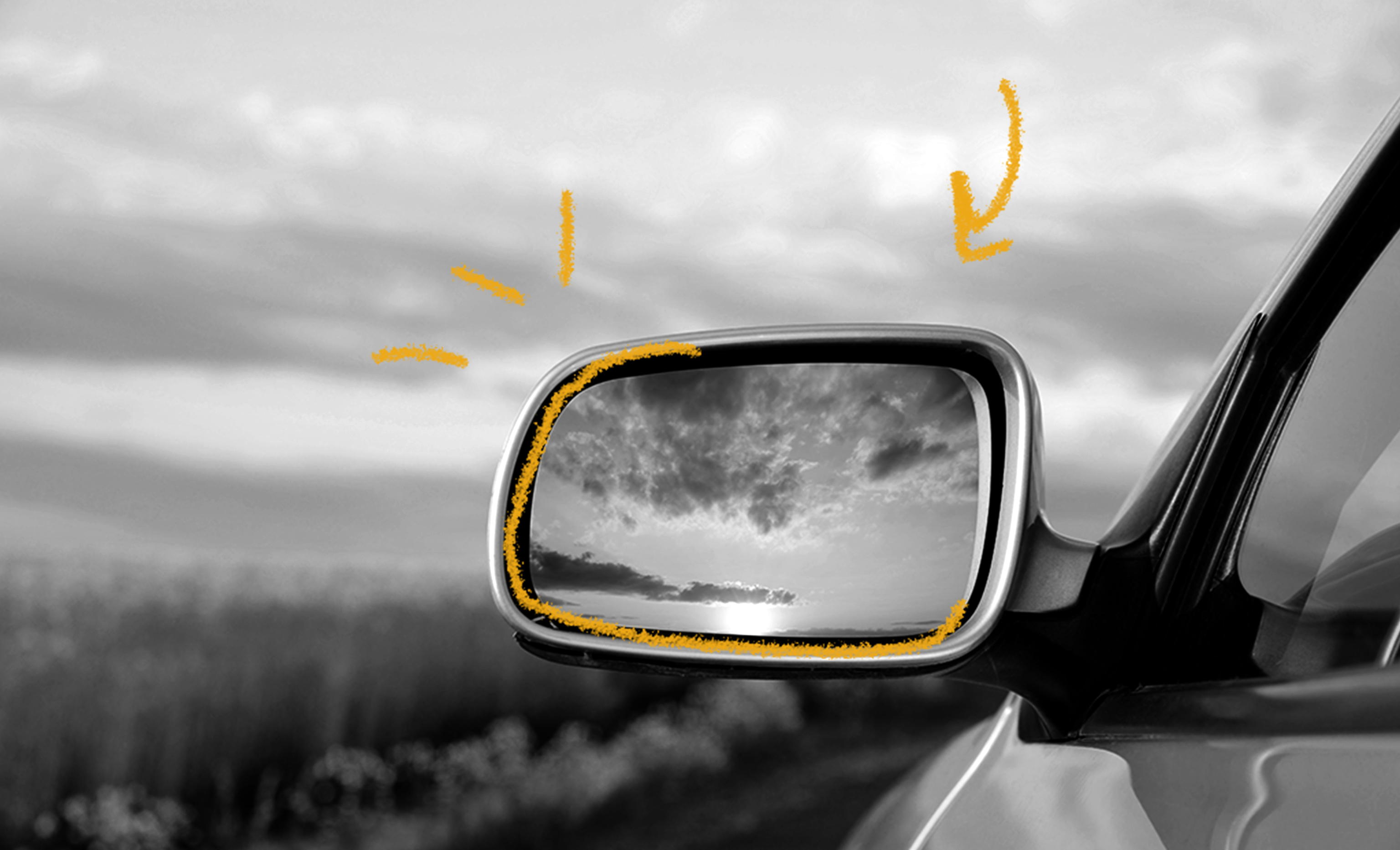As early as 1906, a European car called the Argus featured dash mirrors. Dorothy Levitt, author of a famous 1906 book called The Woman and the Car: A Chatty Little Handbook for All Women Who Motor or Want to Motor, recommended that women carry a handheld mirror while driving so that they could hold it up to view the road behind them. In 1914, a U.S. patent was issued to Chester A. Weed of Brooklyn for a “mirror attachment for automobiles” that was meant to help drivers avoid blind spots. And in 1911, Ray Harroun, winner of the first Indy 500 race, mounted a mirror on his Marmon “Wasp” vehicle. He said that he got the idea back in 1904 when he glimpsed a horse-drawn buggy driver using a rearview mirror. Harroun opted to mount one on his racecar instead of having his mechanic ride in the car with him and call out what was happening to the side and rear of the car, as was customary at the time. Harroun believed not having the extra weight would help him win, which it did, but he also mentioned that the mirror didn’t help him see what was happening around his vehicle, because the brick track he was racing on created so much vibration that he was ultimately unable to see images in the mirror. The first widely distributed rearview mirror didn’t come out until the 1920s, when an engineer named Elmer Berger began selling his “Cop-Spotter” mirror attachment. While it was intended to help drivers avoid police, it helped normalize attaching mirrors to cars, paving the way for the more safety-minded rearview mirrors of today. Since then, multiple patents have been filed and multiple improvements have been made to the rearview mirror we are so familiar with today. Modern versions have useful features like multi-way adjustability, anti-glare coatings, and specialized signals that can alert drivers if another car is in their blind spot. And although many cars now offer rearview cameras, rearview mirrors remain an indispensable safety feature in automobiles today.

Your go-to guide for weird history facts
Subscribe to the FREE daily email that makes learning about history fun.


